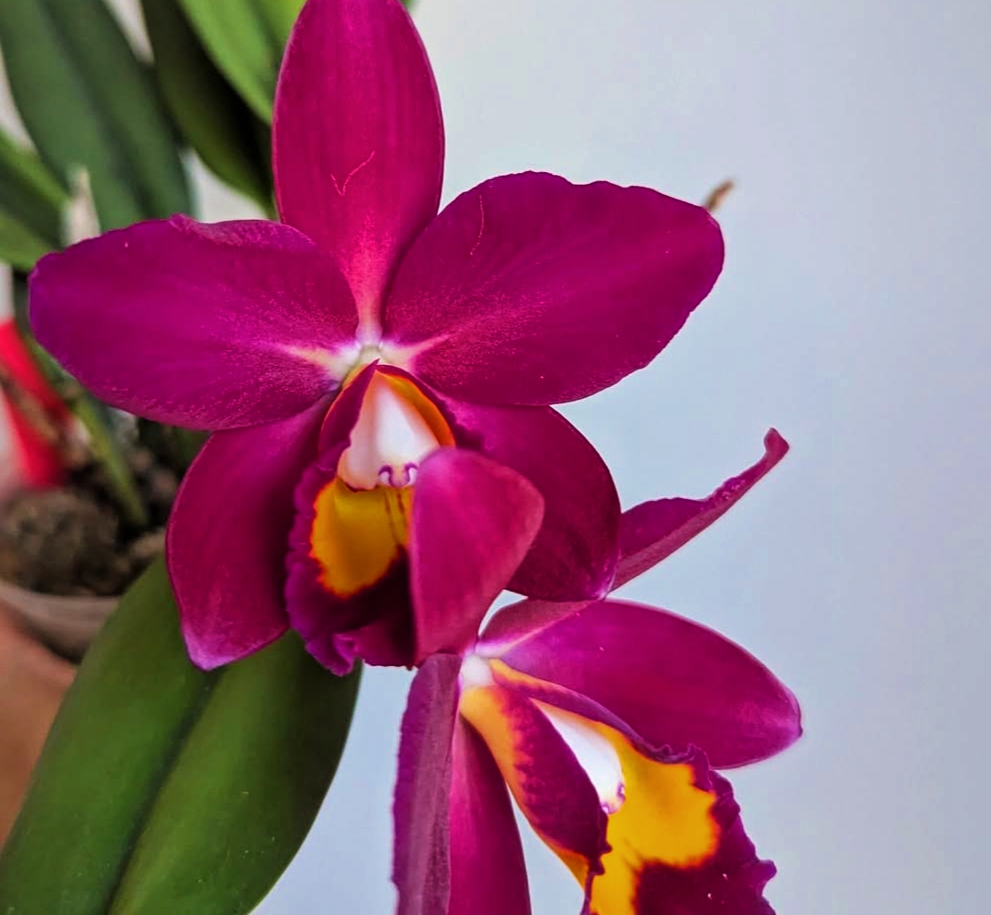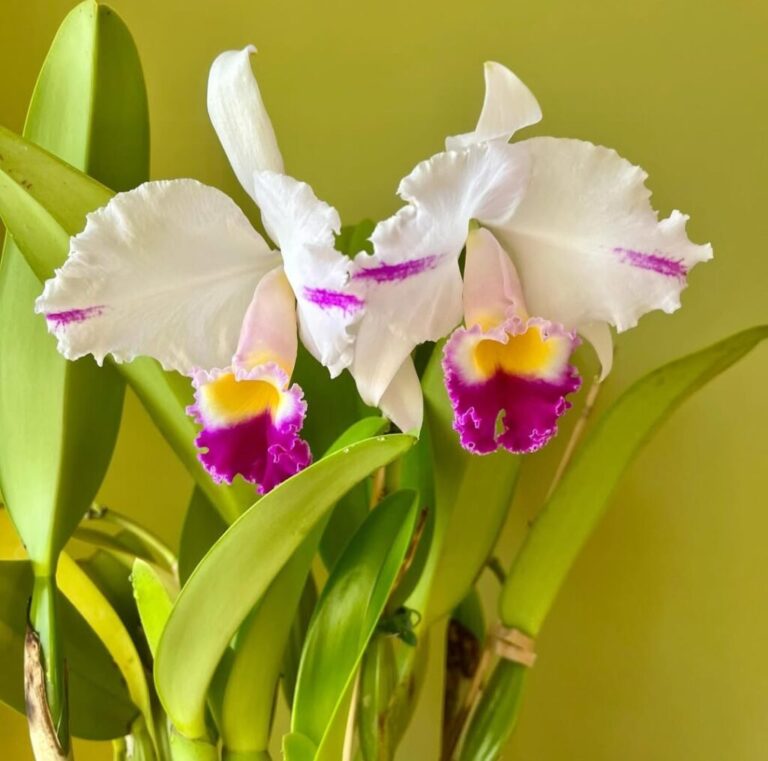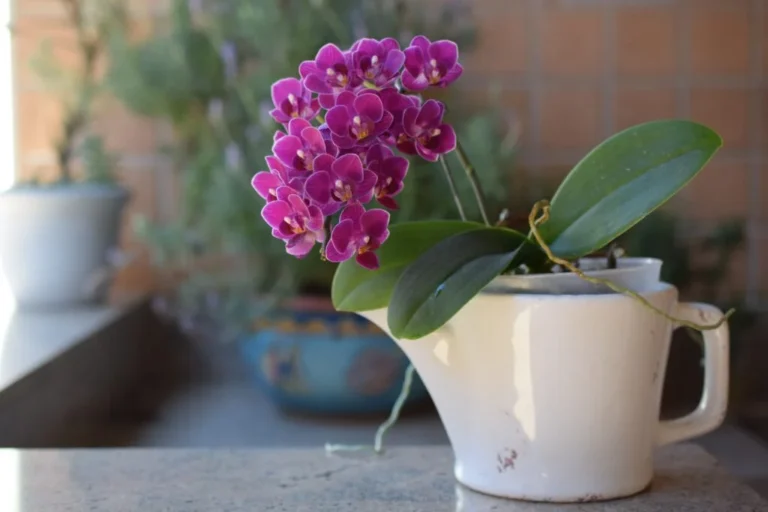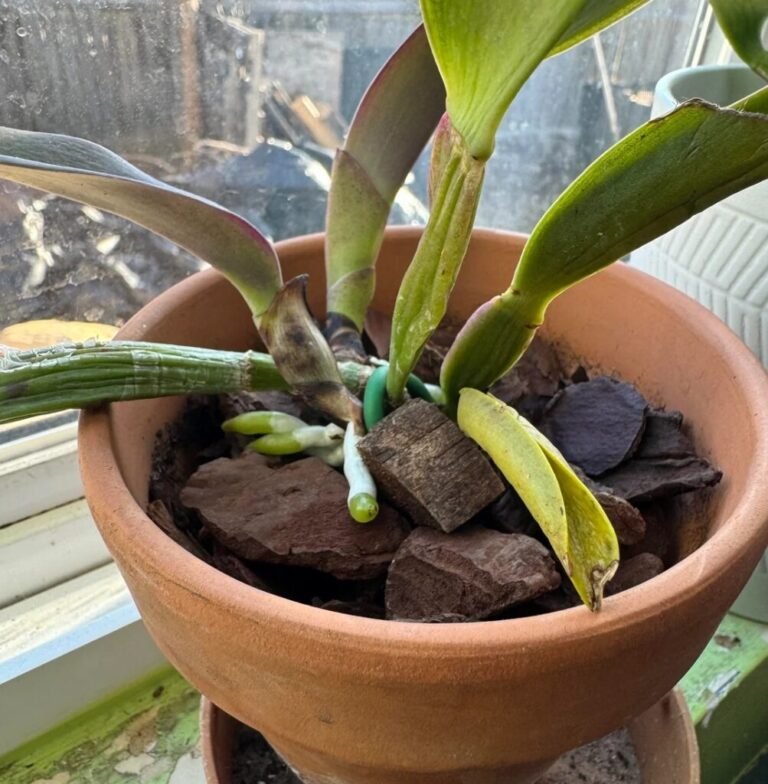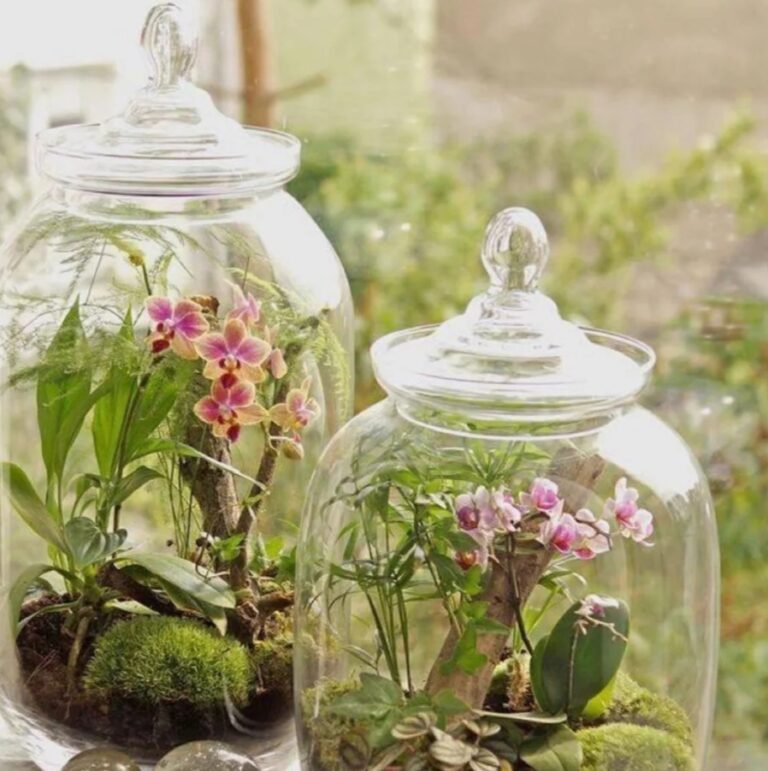Orchids are known for their beauty and elegance, but they can be quite finicky when it comes to growth. If your orchid isn’t developing properly, showing signs of weak stems, slow leaf production, or failing to bloom, you’re not alone. Many growers, both beginners and experienced, face these common growth issues. However, the key to a thriving orchid lies in understanding its needs and making small but effective adjustments to its care routine.
orchid growth problems. Whether your orchid is struggling due to improper watering, insufficient light, poor air circulation, or a lack of essential nutrients, we’ve got you covered. By following these simple yet effective strategies, you can help your orchids grow healthier, produce vibrant leaves, and bloom beautifully. Let’s explore these solutions and bring your orchids back to their full potential!

- 1 1. Slow Growth or Stunted Orchid Growth
- 2 2. Yellow Leaves on Orchids
- 3 3. Orchid Root Rot (Mushy, Brown, or Black Roots)
- 4 4. Wrinkled or Shriveled Orchid Leaves
- 5 5. No Blooms on Your Orchid
- 6 6. Bud Blast (Buds Falling Off Before Blooming)
- 7 7. Pests on Orchids (Aphids, Mealybugs, Spider Mites)
- 8 8. Black or Brown Spots on Leaves
- 9 9. Drooping or Limp Orchid Leaves
- 10 10. White Mold or Fungal Growth on Orchid Bark
- 11 FAQS
1. Slow Growth or Stunted Orchid Growth
A healthy orchid should show signs of steady growth—whether it’s new roots, fresh leaves, or a developing flower spike. However, if your orchid appears stuck in place for months, the issue might be caused by a lack of light, improper nutrients, or damaged roots.
Light is one of the most critical factors for orchid growth. Without adequate light, orchids struggle to photosynthesize, leading to slow or no growth. If your orchid’s leaves appear dark green, it’s an indicator that they aren’t getting enough light. While dark green leaves may look beautiful, they signal that the plant isn’t receiving the energy it needs to produce new roots, leaves, and flowers.
Another major issue is poor nutrition. Orchids don’t grow in regular soil, so they need a balanced fertilizer to provide essential nutrients. If your orchid is not growing, check if you’re feeding it correctly. A fertilizer with a 20-20-20 balance, applied every two weeks during the active growing season, helps orchids develop stronger roots and leaves.
Lastly, weak or damaged roots can limit the plant’s ability to absorb water and nutrients, leading to stunted growth. If your orchid has been in the same pot for too long, the bark might have broken down, suffocating the roots. Repotting your orchid every one to two years ensures a fresh and aerated environment for proper growth.
How to Fix It:
Place orchids in bright, indirect light for at least 12 hours daily. If growing indoors, consider using a full-spectrum grow light during winter months.
Use a balanced orchid fertilizer (20-20-20 or similar) every two weeks when the plant is actively growing. Reduce feeding when the orchid is dormant.
Repot orchids in fresh orchid bark mix every 1-2 years to promote healthy root growth.
Quick Tip:
Misting your orchid’s aerial roots with distilled water in the morning helps keep them hydrated and encourages new growth.
2. Yellow Leaves on Orchids
Yellowing leaves are one of the most common orchid growth problems, and they can have multiple causes, including overwatering, excessive light exposure, or nutrient deficiencies. It’s important to determine the underlying issue to apply the correct solution.
Overwatering is the most frequent cause of yellowing leaves. Orchids, especially Phalaenopsis, need a specific watering schedule. Watering too often drowns the roots, causing them to rot and lose their ability to transport nutrients. This results in yellow, limp leaves that eventually fall off. If you suspect overwatering, check the roots—healthy ones should be firm and green, while rotting roots appear mushy and brown.
Excessive light can also burn orchid leaves, leading to yellowing, brown patches, and even leaf drop. Orchids placed in direct sunlight for long hours often develop sunburn, which appears as yellowing or bleached spots. The best way to prevent this is by moving your orchid to a bright but shaded spot, such as an east-facing window with sheer curtains.
A lack of nutrients—especially nitrogen deficiency—can also cause leaves to yellow prematurely. This happens when orchids are grown in old potting media that has broken down and no longer provides essential nutrients. If your orchid’s leaves are turning yellow while the rest of the plant looks healthy, consider using a nitrogen-rich fertilizer (30-10-10) to correct the imbalance.
How to Fix It:
Adjust your watering schedule to prevent overwatering—water only when the roots turn silver.
Move orchids out of direct sunlight and place them in a location with bright but indirect light.
Feed orchids with a high-nitrogen fertilizer during the growing season to prevent nutrient deficiencies.
Quick Tip:
If only one or two lower leaves are yellowing and the rest of the plant is healthy, it may be a normal aging process. Simply trim the yellow leaves once they become dry.
3. Orchid Root Rot (Mushy, Brown, or Black Roots)
Root rot is a serious orchid growth problem that can kill a plant if left untreated. This issue is primarily caused by overwatering and poor drainage. If an orchid’s roots are constantly sitting in water, they become soft, mushy, and start decaying, preventing the plant from absorbing nutrients.
To identify root rot, gently remove your orchid from its pot and inspect the roots. Healthy roots should be firm and either green (if wet) or silver (if dry). Rotten roots will appear brown or black, and they may feel soft or slimy. The best way to fix this problem is by trimming the rotted roots and repotting the orchid in fresh bark mix.
Additionally, using the right pot can make a big difference in preventing root rot. Orchids should be grown in pots with drainage holes to ensure excess water can escape. Some growers also prefer using clear plastic pots, which allow you to monitor root health and moisture levels easily.
How to Fix It:
Carefully remove the orchid from its pot and trim all rotted roots with sterilized scissors.
Repot in fresh orchid bark mix and choose a well-ventilated pot with good drainage.
Allow orchids to dry out slightly between waterings to prevent future rot.
Quick Tip:
Sprinkle cinnamon powder on cut roots—it acts as a natural antifungal agent to prevent infection.
Orchid Growth Care Timetable
| Task | Frequency |
|---|---|
| Watering | Every 5-7 days (adjust as needed) |
| Fertilizing | Every 2 weeks (weak solution) |
| Repotting | Every 1-2 years |
| Light Check | Weekly |
| Pest Inspection | Every 2 weeks |
| Humidity Check | Daily |
By following these solutions for orchid growth problems, you can help your orchids thrive and bloom beautifully. With proper care, you’ll enjoy healthy leaves, strong roots, and stunning flowers for years to come!
4. Wrinkled or Shriveled Orchid Leaves
Orchid leaves should be firm, plump, and slightly glossy, but when they start to wrinkle or shrivel, it’s a sign of dehydration. This problem is often caused by underwatering, root damage, or low humidity levels.
One of the biggest misconceptions among orchid growers is that shriveled leaves always mean the plant needs more water. However, if the roots are damaged—due to rot, pests, or old potting media—the plant cannot absorb moisture, even if you water it regularly. This is why checking the root system is essential before increasing watering frequency.
Another factor is low humidity. Orchids are native to tropical environments with humidity levels between 50-70%. If your home has dry air, especially during winter when heaters are running, orchids lose moisture quickly through their leaves. In such cases, simply increasing watering won’t help unless humidity is also adjusted.
How to Fix It:
Inspect the roots—if they’re dry and brittle, soak them in lukewarm water for 15 minutes to rehydrate.
If the potting mix has broken down, repot the orchid in fresh bark to improve moisture retention.
Increase humidity using a humidity tray, room humidifier, or regular misting.
Quick Tip:
Grouping multiple orchids together naturally increases humidity around them.
5. No Blooms on Your Orchid
One of the most frustrating orchid growth problems is when a healthy plant refuses to bloom. If your orchid has lush green leaves but no flowers, it may not be getting the right balance of light, temperature, and nutrients to trigger flowering.
Light exposure plays a crucial role in orchid blooming. Many beginners place their orchids in low-light conditions, thinking they are shade-loving plants. While orchids don’t tolerate direct sun, they still need bright, indirect light for at least 12-14 hours daily. If your orchid isn’t blooming, try moving it to an east-facing window or supplementing with a grow light.
Another factor is temperature variation. Many orchids, including Phalaenopsis, require a drop in nighttime temperature by about 10°F to initiate flower spike formation. If your indoor temperature remains stable throughout the day and night, your orchid may never get the signal to bloom.
Lastly, incorrect fertilization can also hinder flowering. Using a fertilizer high in nitrogen promotes leaf growth instead of flowers. Switching to a high-phosphorus fertilizer (such as 10-30-20) encourages flower spike development.
How to Fix It:
Provide 12-14 hours of bright, indirect light daily.
Ensure a temperature drop of 10°F at night (example: 75°F during the day, 65°F at night).
Switch to a bloom booster fertilizer (high in phosphorus) when you want the orchid to flower.
Quick Tip:
If you notice new roots growing but no flower spike, try reducing watering slightly—mild stress can sometimes encourage blooming.
6. Bud Blast (Buds Falling Off Before Blooming)
If your orchid develops flower buds but they turn yellow and drop off before opening, this is known as bud blast. This can be caused by sudden environmental changes, temperature fluctuations, or stress from repotting.
Temperature stress is a leading cause of bud blast. If the orchid is exposed to cold drafts, sudden heat, or air conditioning vents, it may abort its flower buds to conserve energy. This often happens when orchids are moved too much while forming buds, such as being relocated from store shelves to a home environment.
Another common cause is inconsistent watering. If an orchid is kept too dry while producing buds, it may not have enough moisture to support flower development. On the other hand, overwatering can cause roots to rot, preventing the plant from absorbing the water it needs.
How to Fix It:
Keep the orchid in a stable environment and avoid moving it when buds appear.
Maintain humidity levels at 50-70% to prevent buds from drying out.
Keep the orchid away from heaters, air conditioners, and cold drafts.
Quick Tip:
Orchids in low-humidity environments benefit from placing a bowl of water nearby to increase moisture levels.
7. Pests on Orchids (Aphids, Mealybugs, Spider Mites)
Pests are another major cause of orchid growth problems, as they feed on leaves, stems, and roots, weakening the plant. The most common orchid pests include:
Aphids – Tiny green, yellow, or black insects that suck sap from tender leaves and flower buds.
Mealybugs – White, cotton-like clusters found on leaves and in leaf joints.
Spider mites – Microscopic pests that create webbing under leaves and cause tiny yellow spots.
Pest infestations can spread quickly, leading to deformed leaves, weak flower spikes, and slow growth. If left untreated, they can kill an orchid.
How to Fix It:
Use a cotton swab soaked in rubbing alcohol to manually eliminate pests.
Wash the plant with a mixture of water and mild dish soap to remove bugs.
Apply neem oil spray as a natural insecticide to prevent future infestations.
Quick Tip:
Inspect new orchids before bringing them home to prevent pests from spreading to your collection.
8. Black or Brown Spots on Leaves
If you notice dark brown or black spots appearing on orchid leaves, it could be a fungal or bacterial infection. These infections often develop due to high humidity, poor airflow, or excess moisture left on the leaves.
Fungal infections usually start as small black spots and gradually enlarge, while bacterial infections cause wet, oozing lesions. If left untreated, these spots can spread and eventually kill the affected leaf.
How to Fix It:
Remove infected leaves using sterilized scissors.
Improve air circulation by placing a small fan near the orchids.
Avoid getting water on leaves—water only at the base of the plant.
Quick Tip:
Dusting cinnamon powder on cut leaf areas helps prevent further infection.
9. Drooping or Limp Orchid Leaves
Limp, soft leaves are usually a sign of overwatering or root rot, which prevents the plant from absorbing moisture properly. In some cases, orchids with weak or dying roots cannot support their leaves, causing them to collapse.
How to Fix It:
Check the roots—trim any that are brown, mushy, or black.
Repot the orchid in fresh bark to improve drainage.
Water only when the roots turn silver—not before.
Quick Tip:
If an orchid’s leaves become limp overnight, it might have suffered sudden temperature shock.
10. White Mold or Fungal Growth on Orchid Bark
White mold on orchid bark is usually harmless but indicates excess moisture. This can happen when orchids are kept too damp, or when there’s poor airflow around the plant.
How to Fix It:
Repot in fresh orchid bark mix to remove mold.
Increase airflow using a small fan nearby.
Allow the top layer of bark to dry between waterings.
Quick Tip:
Using a terra cotta pot instead of plastic helps reduce moisture buildup.
Orchid growth problems can be frustrating, but most issues have simple solutions when you understand their causes. By adjusting watering, light, humidity, and nutrients, you can prevent common issues and help your orchid thrive.
FAQS
What are the most common orchid growth problems?
The most common orchid growth problems include yellowing leaves, wrinkled leaves, root rot, bud blast, and lack of blooming. Other issues like pests, fungal infections, and improper watering can also affect orchid health.
Why are my orchid leaves turning yellow?
Yellow leaves are one of the most frequent orchid growth problems and can be caused by overwatering, underwatering, or too much direct sunlight. If only the bottom leaves are yellowing, it may be a natural part of the plant’s growth cycle.
How do I fix root rot in orchids?
Root rot is one of the most serious orchid growth problems and is caused by excessive moisture and poor drainage. To fix it, remove the orchid from its pot, trim away mushy roots, and repot it in fresh well-draining orchid bark mix.
Why is my orchid not blooming?
Lack of flowering is a common orchid growth problem that results from insufficient light, incorrect temperature variations, or over-fertilization with nitrogen-heavy fertilizers. To encourage blooms, provide bright, indirect light and maintain a 10°F drop in temperature at night.
What causes wrinkled or shriveled orchid leaves?
Wrinkled leaves are a sign of orchid growth problems related to dehydration or root damage. Even if you are watering correctly, damaged roots may prevent water absorption, leading to shriveled leaves. Checking the roots and improving humidity levels can help solve this issue.
How can I increase humidity for my orchid?
Low humidity is a common cause of orchid growth problems, especially in dry climates or during winter. You can increase humidity by using a humidity tray, placing orchids together, or running a small humidifier.
Why are my orchid’s buds falling off before blooming?
Bud blast, or flower buds dropping before opening, is one of the frustrating orchid growth problems caused by sudden temperature changes, drafts, low humidity, or inconsistent watering. Keep orchids away from heaters, air conditioners, and direct drafts to prevent bud blast.
What are the signs of overwatering an orchid?
Overwatering leads to serious orchid growth problems, such as root rot, limp leaves, and fungus growth. Signs include brown or mushy roots, a foul smell from the pot, and constantly wet bark. Water only when the roots turn silver-green.
Why do orchids develop black or brown spots on their leaves?
Black or brown spots on orchid leaves indicate fungal or bacterial infections, which are common orchid growth problems in high-humidity environments. Improve air circulation, avoid watering the leaves, and apply cinnamon powder or fungicides to prevent the spread.
How often should I repot my orchid to prevent growth problems?
Repotting every 1-2 years helps prevent orchid growth problems like root rot, poor drainage, and lack of nutrients. If the potting medium breaks down or the roots start crowding the pot, it’s time to repot
Why are my orchid roots turning white or brown?
Healthy orchid roots should be green when moist and silvery-white when dry. Brown, mushy roots indicate rot due to overwatering, while dry, brittle roots mean the orchid is dehydrated. Identifying the cause early can prevent further orchid growth problems.
How do I prevent mold in my orchid potting mix?
Mold is a sign of excess moisture and poor ventilation, which can lead to serious orchid growth problems. Use a well-ventilated pot, fresh orchid bark, and increase airflow around the plant to prevent mold buildup.
Can direct sunlight harm orchids?
Yes, too much direct sun can cause orchid growth problems like leaf burn, dehydration, and stress. Orchids prefer bright, indirect light, so placing them near an east or south-facing window with sheer curtains works best.
Can orchids recover from overwatering?
Yes, orchids can recover from overwatering-related orchid growth problems if caught early. Remove the orchid from its pot, trim off rotten roots, and let it dry before repotting in fresh bark. Take a few days off from watering to give the roots time to recover.
What pests commonly attack orchids?
Orchids are prone to orchid growth problems caused by aphids, mealybugs, scale insects, and spider mites. These pests suck nutrients from the leaves and stems, weakening the plant. Utilising neem oil or insecticidal soap can effectively manage infestations.
